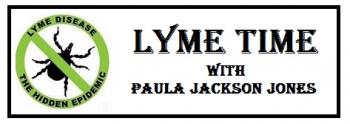O Christmas Tree (please) Be Tick-Free
It’s the question on everyone’s minds this holiday season: Should I cut down a real Christmas tree or buy a fake one? Freshly cut evergreen trees are beautiful and make your home smell amazing, getting you in the Christmas spirit.
One of my fondest childhood memories was decorating our tree. Growing up, we always had a real tree. Let me preface this by adding that my dad would take us deep into the woods, with his saw and we would cut down our tree after much debating over the “perfect Christmas tree”. Let me further add that we then carried said tree back to our home, with much grumbling about the weight and struggling to walk through the snowy wooded trail. Mom was always home waiting with hot cocoa and as dad was outside taking measurements, to get it upright and in the tree stand, we were warming up inside with cocoa, listening to Christmas music.
As we got older, the thrill to venture out into the woods faded and was soon replaced with a fake Christmas tree. Now, don’t get me wrong, the manufacturers are making some nice looking (but fake) trees that stand the test of time and do not attract bugs. And when you bring home a real tree, you are also inviting thousands of little insects that are hibernating inside the tree.
Ah yes, she finally got around to talking about bugs. LOL. It’s OK, it’s what I do and honestly, I have had a lot of people asking me about Christmas trees and what I recommend. I like to give people choices and arm them with all the information they need to make the very best choice. With that being said, I would like to share with you some preventative information you need to know about setting up a real Christmas tree in your home.
Did you know that 33 million live Christmas trees are sold every year and that one single tree can contain up to 25,000 bugs? Aside from ticks, the most common insects found in Christmas trees are:
Aphids – common to evergreens, pine, balsam fir, spruce, Fraser fir and white fir trees
Spiders and Mites – common to Douglas fir, white pine, Fraser fir and spruce trees
Adelgids – common to fir trees, white pine, Norway spruce and Scotch pine trees
Pine Needle Scale – common to Scotch pine, Norway spruce and Douglas Fir trees
Sawfly – common to spruce and pine trees
Praying Mantises – common to most trees
Bark Beetles – common to Monterey pines, ponderosa, Jeffrey pine, white fir and juniper trees.
SAFER, the manufacturer of Diatomaceous Earth, shares the best way to avoid Christmas tree critters from ruining your holiday is to take these preventative actions.
Lay down a tarp under your tree and sprinkle Diatomaceous Earth, an insecticidal powder that uses no synthetic chemicals and leaves no scent or odors. Simply dust your tree while it's still outside and shake off excess before bringing it inside. You can also spray Neem Oil on each branch and work through the tree. As your tree opens overnight, any pesky stowaways will have been eliminated. You can also sprinkle more powder on tree as needed and vacuum up any residue.
Inspect the tree branches and trunk for any signs of eggs or bugs.
Give the tree a good shake before bringing inside.
Let the tree sit in your garage for at least 24 hours before decorating (this will allow you to see if there are any other bugs venturing out from the tree and to help the tree settle)
During this time, spray with Safer® Brand’s End All® neem oil to kill Christmas tree bugs in any stages from eggs to adults.
[NOTE: Aerosol pesticides can be flammable and are not recommended]
The next step is bringing the real tree into your home. Remember, when slumbering insects enter your festive, warm home, they will wake up thinking it is spring and become active, seeking their blood meal.
You’ve pretreated the tree against any insects but how do you keep your family and pets safe from any additional stowaways that make it into your home. I recommend spraying your tree skirt with Permethrin. Hang it up in a safe area away from pets, spray it with Permethrin, allow it to fully dry and then place beneath the tree. As ticks do not jump or fly, they will crawl up and down the tree and treating your tree skirt with Permethrin will kill ticks on contact and keep your family and pets safe.
Seems like a lot of trouble to go through just to have an insect-free, real tree in your home but those who are battling tick-borne disease will tell you the ounce of prevention is so worth it in the end to know that you’re bringing in a safe and festive tree to be adorned with holiday tradition and rituals.
Now don’t get me wrong. Fake trees can be just as beautiful and far less cumbersome. I speak from experience as I haul out my fully decorated tabletop tree each year, adorned with built-in lights. Whether your tree is real or fake, remember that the holidays are a time for reflection and celebration. I wish you all a holiday season of good health, peace and prosperity. May your days be merry and bright, and may all your Christmases be white
Paula is the president of the MLDSE, the Maine-partner of the national Lyme Disease Association, a member of Maine’s CDC Vector-borne Workgroup and active in Maine’s Lyme legislation. You can reach her at paula@mldse.org































